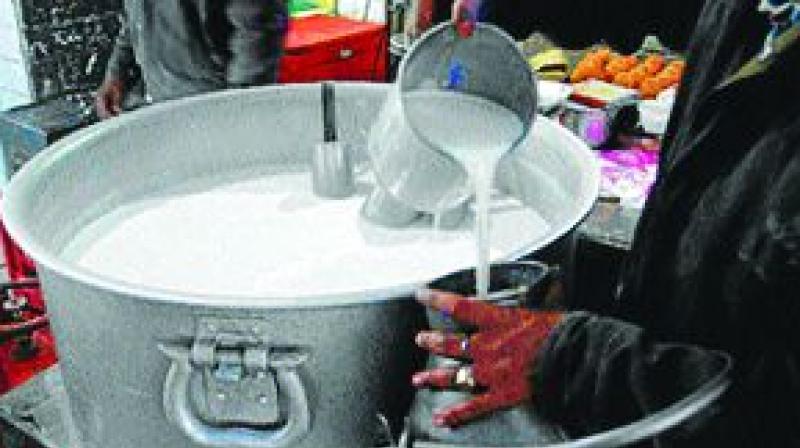Mini device to detect adulterated milk
IIT-H develops device after increase in milk adulteration incidents.;

Hyderabad: A team of researchers at IIT Hyderabad has developed a portable device to detect milk adulteration. The new method will monitor the inherent biophysical properties of milk, which are called markers.
The markers are affected or altered due to adulterants. The overall plan is to develop miniaturised sensors for each marker and then integrate them on a single platform, using the complementary metal–oxi-de–semiconductor (CMOS) fabrication technology.
The team, led by professor Shiv Govind Singh and professor Shiva Krishna Vanjari, department of electrical engineering, came up with a ‘proof-of-concept’ device. The team is currently working on miniaturising the product.
Researchers developed this portable device after the increase in milk adulteration cases in the country. Milk has been adulterated with chemicals such benzoic acid, salicylic acid, ammonium sulphate, cyanuric acid, amino acids and urea.
According to the resear-chers, the current method focuses only on adulterant-specific approaches wherein detection of individual adulterants requires a specific chemistry or an enzymatic reaction or an experimental protocol. Costly instrumentation and laboratory facilities are required to simultaneously detect a group of adulterants in milk.
Professor Shiv Govind Singh said, “Our research proposed a novel milk quality detection approach based on utilisation of inherent biophysical properties. This method is generic and universal. It exploits the change in innate milk properties upon milk adulteration.”
He added, “The overall research plan is to develop miniaturised sensors for each marker and then integrate them on a single platform using the CMOS fabrication technology. The method is independent and can be used globally.
What the device does
- Bio-physical properties of milk are used
- Spectroscopy-based adulteration detection using fabricated electrodes.
- Impedance and pH as unified-universal-marker of milk adulteration.
- More than 10 commercially known hazardous adulterants are detected by monitoring the changes
- A unified-universal-marker for prediction of adulteration is accentuated

